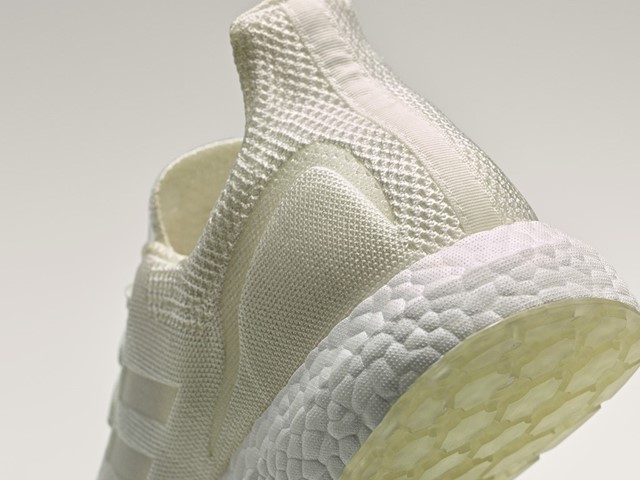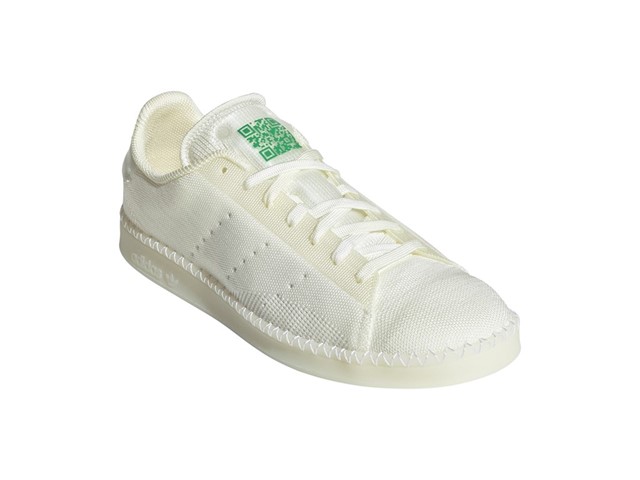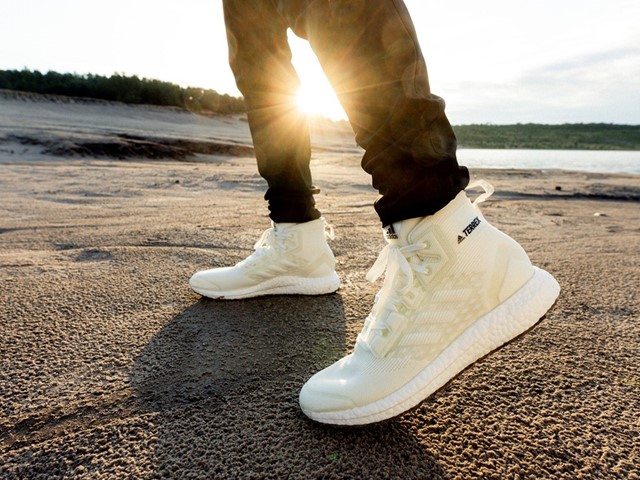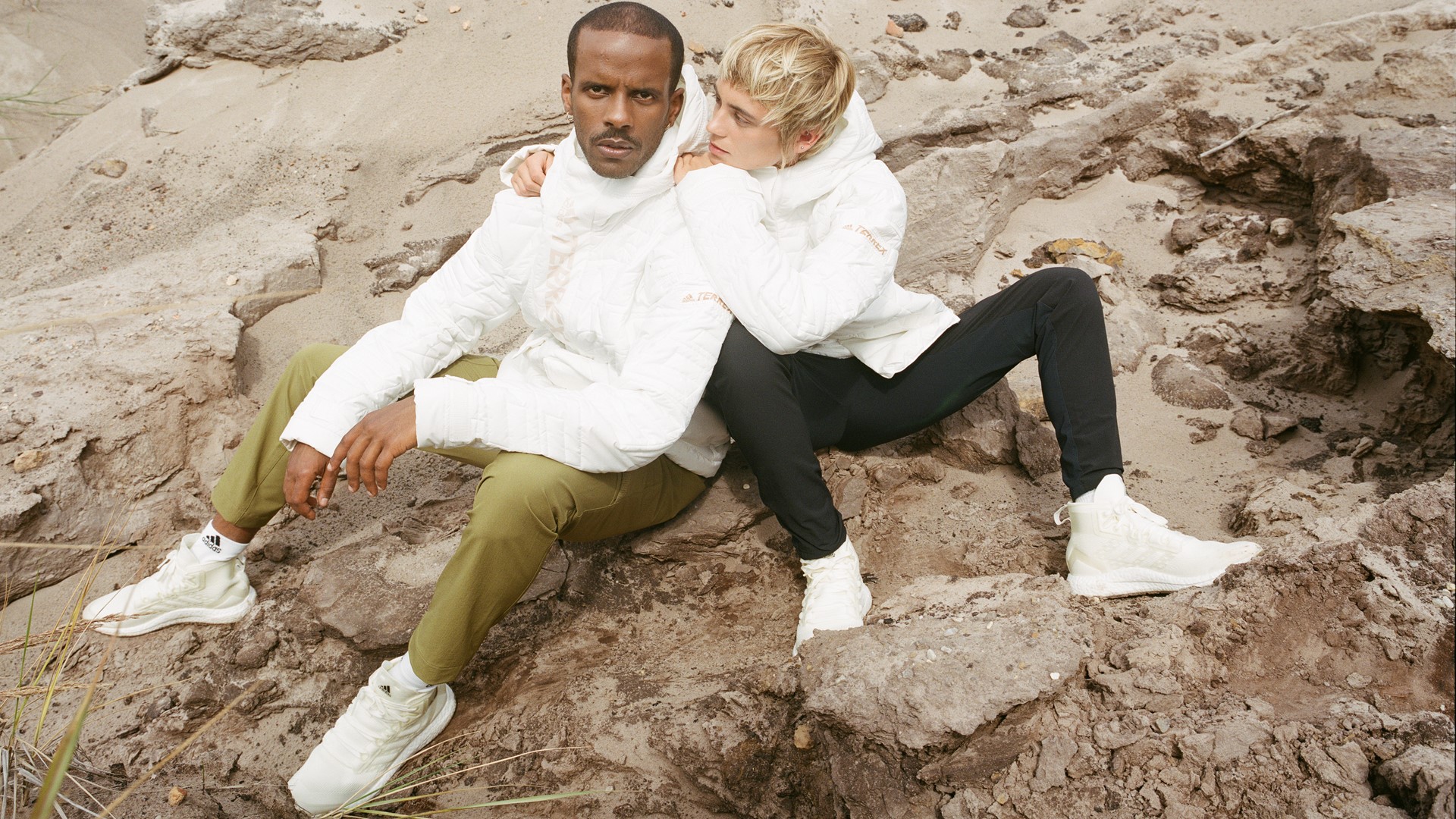2050 is the year when we at adidas plan to achieve climate neutrality. It’s also the year when it’s expected that our oceans will contain more plastic than fish, that is, if we don’t act now. Our solution to help end plastic waste and achieve climate neutrality? Sustainable innovation.
Being in the business of sport for over 70 years has taught adidas many valuable lessons; lessons on winning, losing, and adapting to the needs of athletes – and the world. The current state of the world might initially cause a lot of us to feel defeated and question the impact we can have. Climate change, pollution, plastic waste, water contamination… you name it, it’s happening to our planet. But our mindset of stepping up when against all odds and finding new ways to win together is what is driving us as a company to be a better corporate citizen.
But while we raised the bar on environmental standards at our own sites, in our supply chain and for our products, the change is bigger than us. Innovating and creating products that help preserve the planet for future generations is no longer a niche for specialized brands, and it’s becoming an expected standard for how every company approaches its business. As a big company, we make a big impact in any action we take. Therefore, we speak up and take action, not only to help our consumers understand why they should care, but our industry as well.
MADE TO BE REMADE – THE JOURNEY SO FAR
Last year we announced the Three Loop Strategy – our roadmap to help end plastic waste. At the heart of this is Circular Loop – Made To Be Remade.
The concept behind Made To Be Remade (MTBR) is simple: when one piece of plastic has fulfilled its purpose, it must be remade to fulfil another. Our attitude is that the end of one thing equates to the beginning of the next, and that our products’ lives can be extended by remaking them into new products.
Our Circular Loop creation process has come a long way since we introduced FUTURECRAFT.LOOP – our first running shoe made to be remade – in 2019. From what started as a beta program of just 200 pairs has developed into a concept within the business that spans across multiple categories and in April this year saw the first commercial launch – Ultraboost Made To Be Remade.
David Quass, Director of Sustainability Innovation at adidas described the Made To Be Remade process; “During production we carefully define how products must be designed and created so they can be remade. The process must be transparent, and repeatable. Only then can our learnings be adapted. For example, in our apparel, we’ve designed products that, once returned, can be redeveloped into brand new yarn and reused to knit the next apparel piece. We’re exploring chemical and mechanical recycling technologies which can be applied depending on the material of the products, be it recycled polyester, cotton or regenerated cellulosic, or TPU.”
TPU in particular is an incredible material that we’ve been using it for some time because of its versatility. We use it for some of our most well-known innovations – like Boost – because of its flexibility, durability, and performance benefits. You can melt it down, reform it and create a wide range of components with the same foundational material. We are also the first manufacturer to purpose TPU into a yarn, which has unlocked a whole new dimension of creation possibilities.
But while material is a critical component in making Made To Be Remade products, design is just as important.

Take Ultraboost Made To Be Remade for example, which will see the next generation released in November this year (2021). What’s especially exciting about this product is that, the shoe will be created in part from the previous generation. Featuring a torsion bar that contains 25% reused content from the Futurecraft Loop Gen 2, the Ultraboost Made To Be Remade demonstrates in practice that the end of one product can be the beginning of the next.

Even sooner than November, FW21 will see another adidas icon join the MTBR family - Stan Smith Made To Be Remade. Just like the Ultraboost model, Stan Smith MTBR has been created entirely from TPU – from laces to midsole and everything in between. Limited pairs are available from 16th October to adidas Creators Club members, it is the first commercial MTBR footwear product that isn’t performance focussed, offering greater choice to conscious consumers who are looking for alternatives to some of adidas’s most iconic silhouettes.

Beyond the track and streets, some of adidas’s best-loved Outdoor products are also receiving the MTBR treatment. Alongside Stan Smith MTBR, October will welcome the TERREX Free Hiker Made To Be Remade, featuring a TPU knitted upper and TPU outsole, making it the first TERREX hiking shoe to use the technology. The shoe will be accompanied by the launch of the TERREX Made To Be Remade Anorak – our second-generation prototype following on from the FW20 FUTURECRAFT.LOOP Anorak, which will be commercially available in 2022.
With new innovations like these on the near horizon, Phillip Waller, SVP Strategy and Innovation at adidas spoke on what to expect further down the line: “Next, we’ll push it even further by exploring concepts like disassembly and multi-material reuse. The challenges are endless: but our resolve is relentless. We manufacture, invent, and optimize the performance of our Made To Be Remade products to define what is possible. It takes our best. But the future won’t settle for less. The loop creation process ensures no loss of performance between generations. Product will be worn, worn out and returned to us: each pair moving us closer to a more sustainable future to help end to plastic waste.”
DEVELOPING THE CIRCULAR EXPERIENCE
With LOOP Gen 1, we were working at a scale where we could have conversations with Beta testers, but now where we’re creating tens of thousands of products, the scale of production demanded a more efficient and autonomous process.
First of all, every MTBR product has a QR code attached to it. The QR code is the gateway to the digital experience that has been created specifically for those products, educating and engaging consumers whilst also being the start of the return function. The return function is digitally driven too – return labels can be generated and then all you need to do is drop it off at your nearest post office.
Every MTBR product that’s released into the market goes out with the promise that it can be given back. But as a brand, we don’t want to stop at just our own MTBR products. As an evolution of our Infinite Play takeback pilot launched in 2019 in the UK, we’re officially launching a wider programme – starting in the US – that will allow consumers to give back any and all adidas products at the end of their life. We’ll even reward consumers who make the effort to return products to us.
A CIRCULAR FUTURE
What we’re most excited about for now is seeing how MTBR is evolving. How we’re scaling it across franchises and how this is becoming more and more accessible. We’re putting the organisation outside of its comfort zone and engaging consumers on a new level where we’re asking them to change their behaviour because of how we’re creating. Essentially, MTBR is the proof point of how we move from a linear model to explore circular business models.
Our belief is that circularity will become the new standard in the long run. In our lead up to 2030 (by which point we’ve committed to reducing our carbon footprint by 30% compared to 2017), it will become the basic expectation that consumers have. Similar to how recycled materials have evolved over time in the last 5 years, the same will happen with products that can be returned and made into something else.
“For a company like ours, whose primary expertise is performance products, the circular economy presents new possibilities. It puts the organization outside of its comfort zone. What we do is create and sell products, and that’s what we do best. Here we’re talking about changing the business model and promoting a different means of consumption for consumers, allowing them to engage with products in fresh, new ways. It starts from how we design products and moves to how we enable consumers to access these products and eventually give them back to us so that resources are kept in play and reused. It’s about inviting consumers to change behaviour.” – Phillip Waller, SVP Strategy and Innovation at adidas
We recognize that we are all part of the problem - which makes us even more creative and determined, because with innovation, we have the means to help end plastic waste and eventually reach our ambition of becoming a fully circular company.

